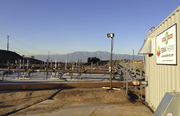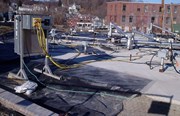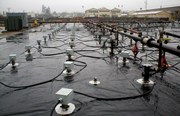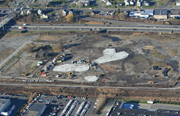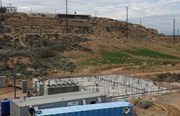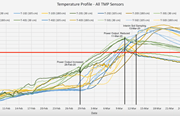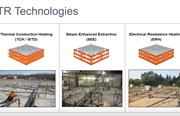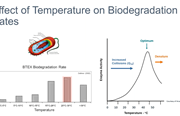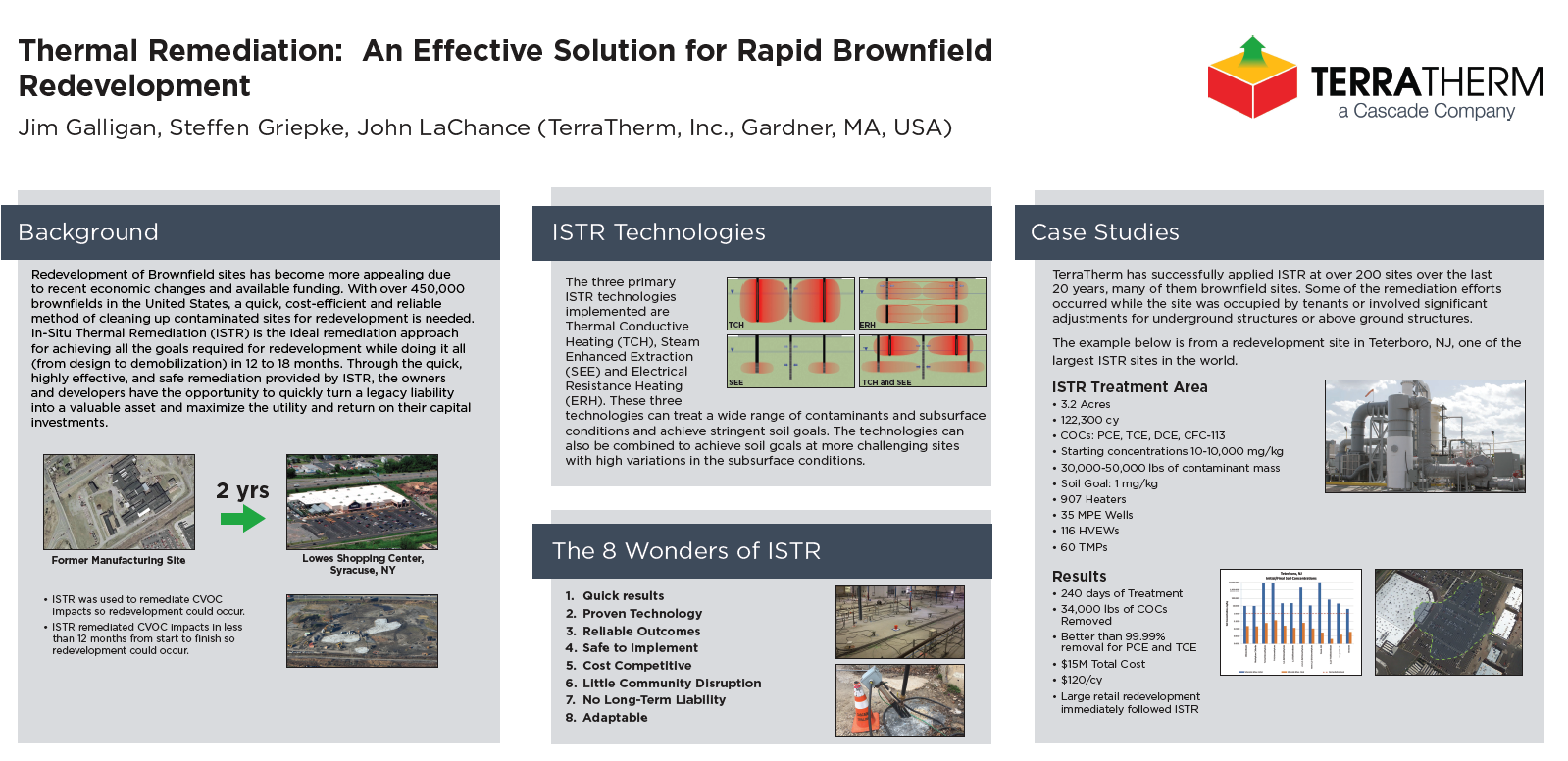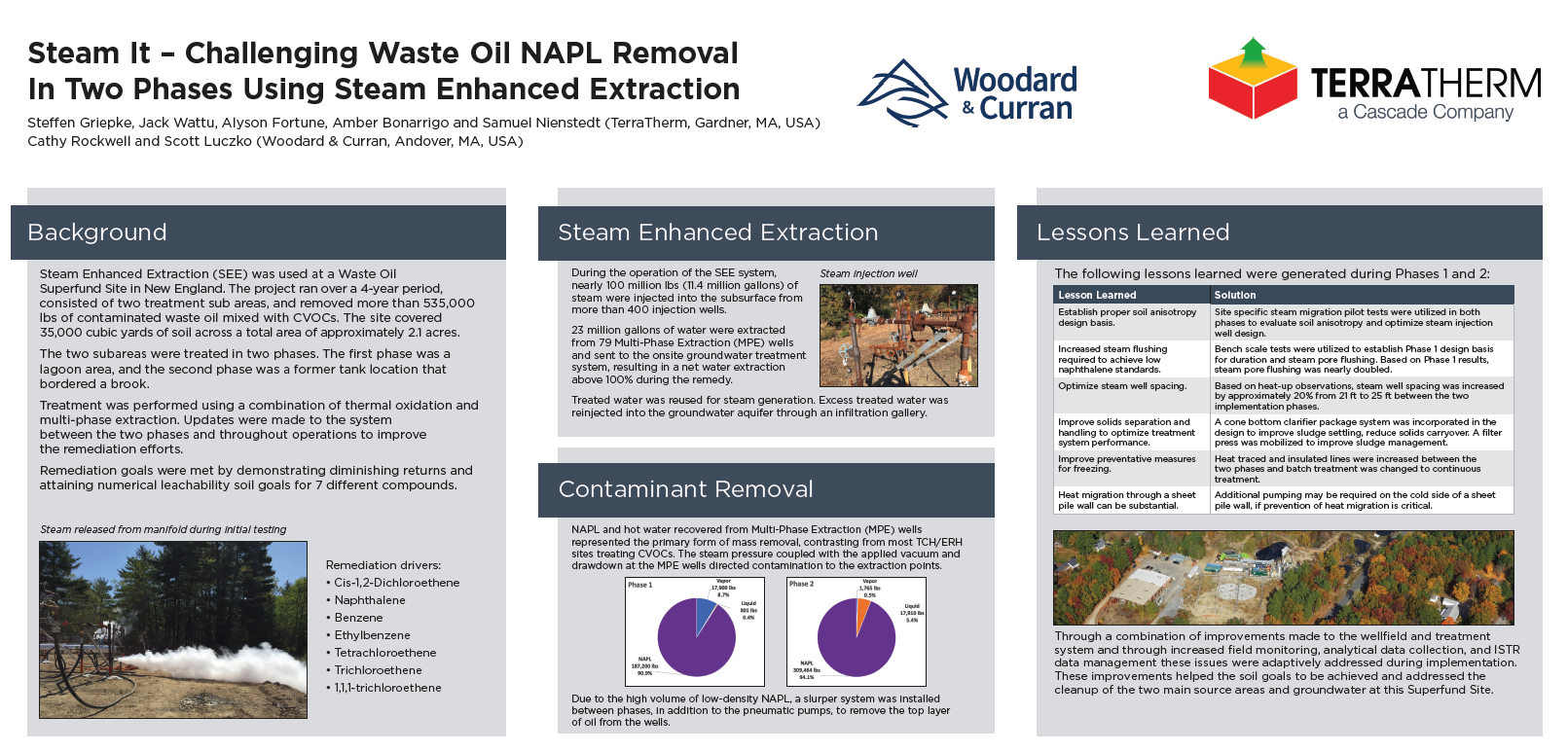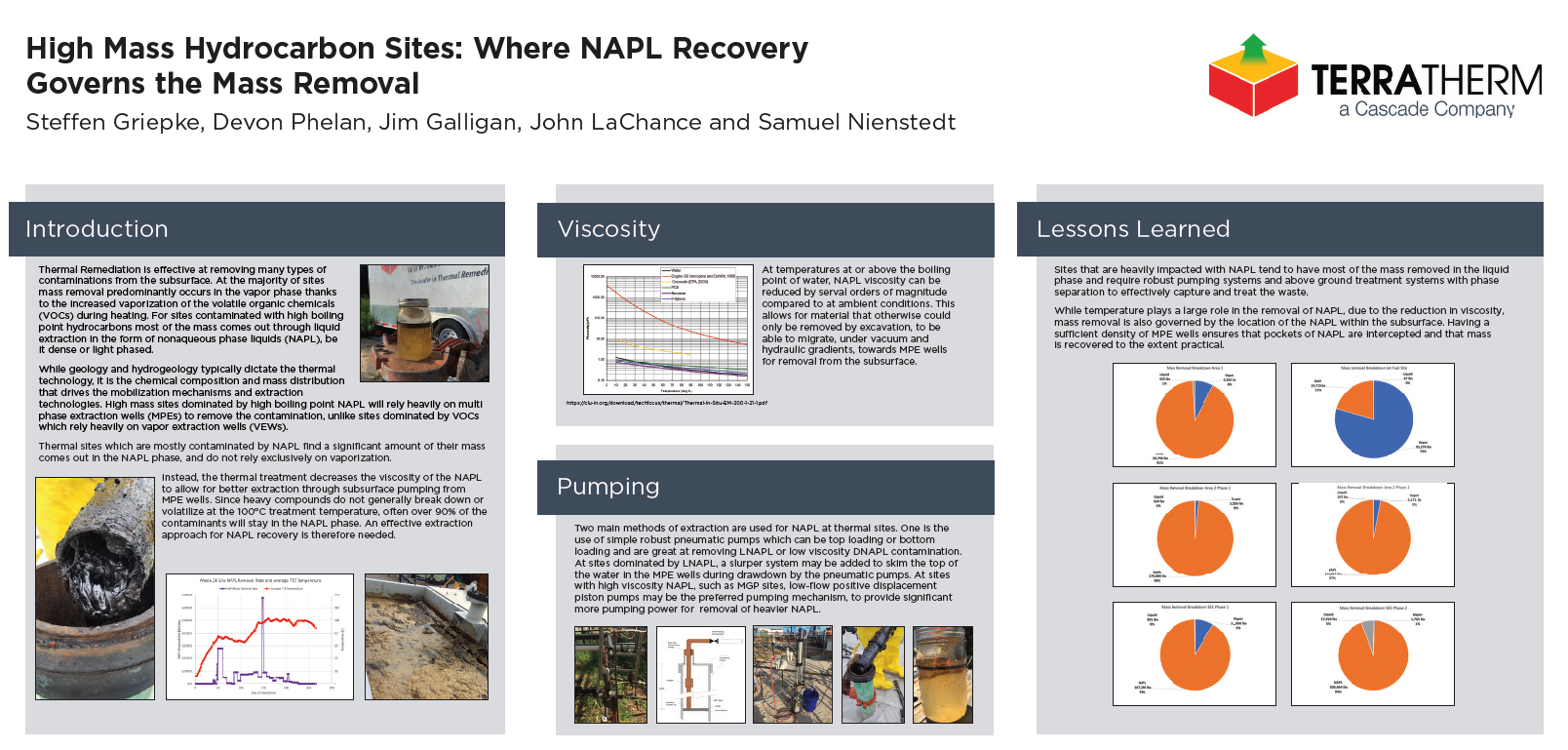Author/Presenter:
Title:
Session:
Thermal
Two case studies will be presented to review different approaches for safely conducting an in-situ thermal remediation project within a designated hazardous location. Thermal Conduction Heating (TCH) was selected to remediate a historic chlorinated solvent release in close proximity to a loading rack handling a range of flammable fuels and other chemicals at an active tank farm facility. In another case, a combination of TCH and steam enhanced bioremediation were selected to remediate soil and groundwater contaminated with BTEX, naphthalene and chlorobenzenes, within a designated hazardous location footprint at an operating chemical plant. Both cases posed unique challenges for safely implementing the thermal remediation remedy. Potential solutions, design alternatives and considerations will be reviewed, and an innovative hazardous location rated TCH wellhead configuration developed for one of the sites will also be discussed. Operating results from deployment of this first of its kind hazardous location rated TCH wellhead will be shared. These cases demonstrate that with proper evaluation, design considerations and careful operation, in-situ thermal remediation can be safely accomplished even in potentially hazardous (classified) locations.

